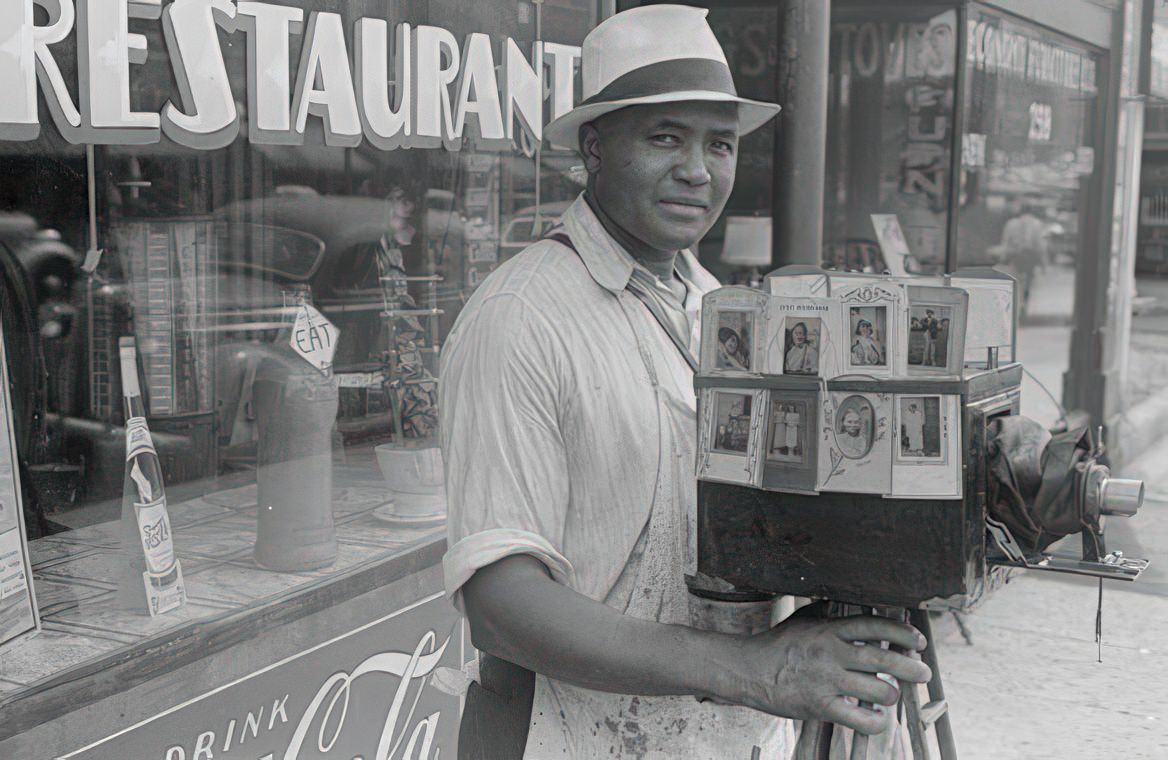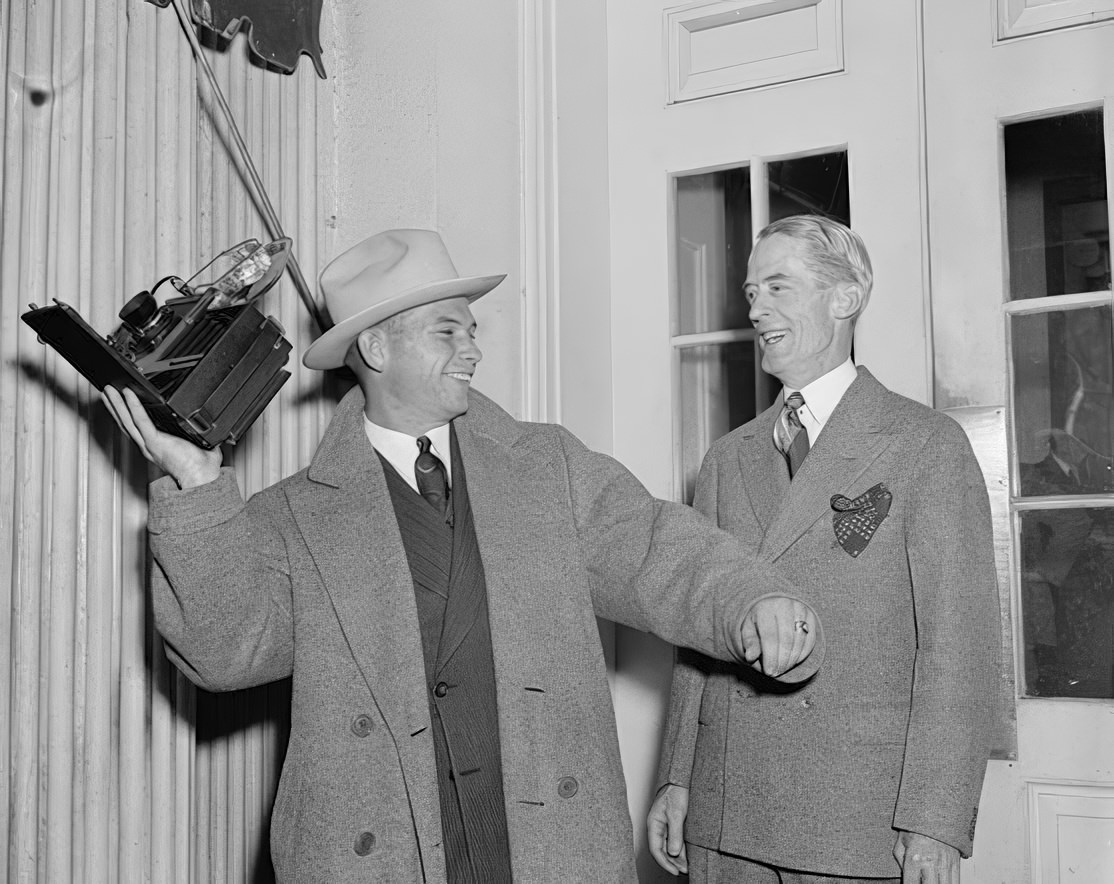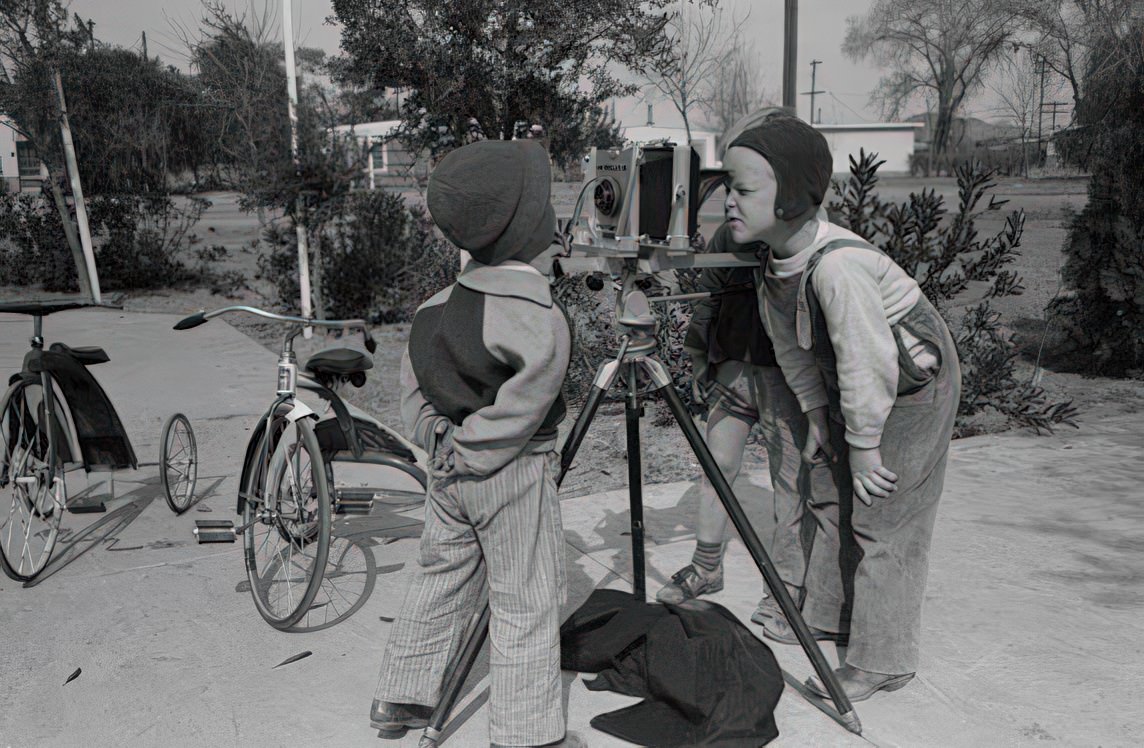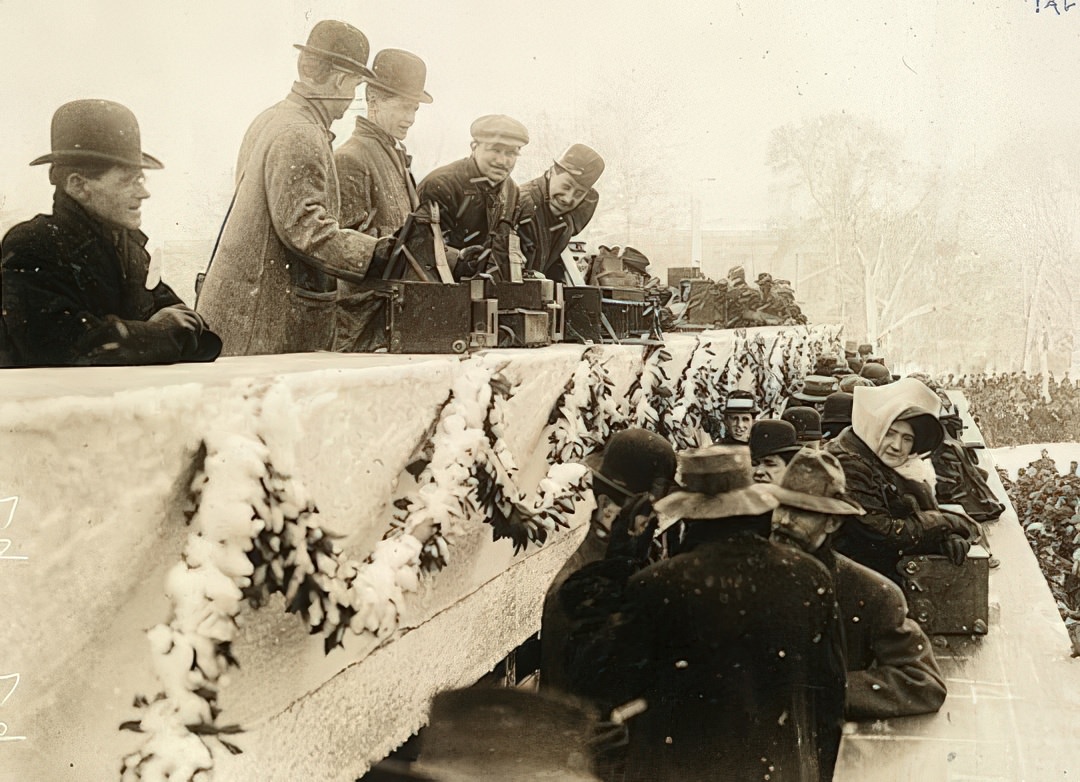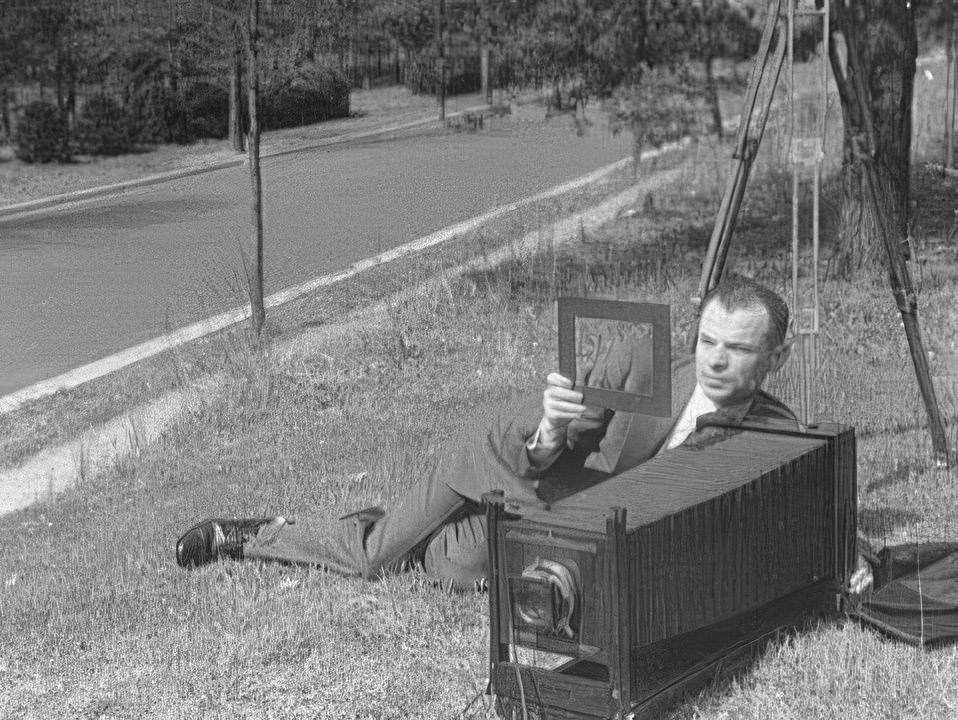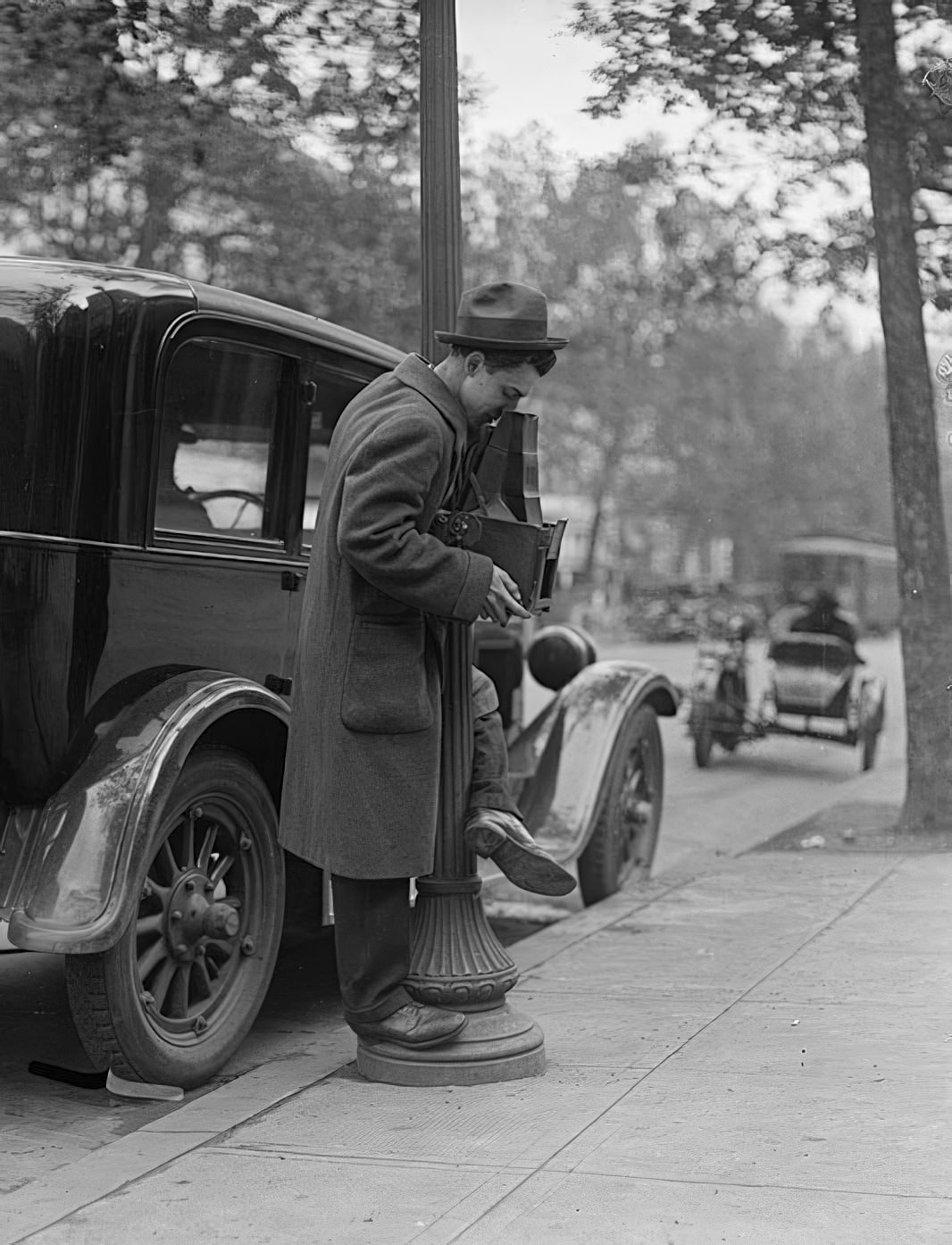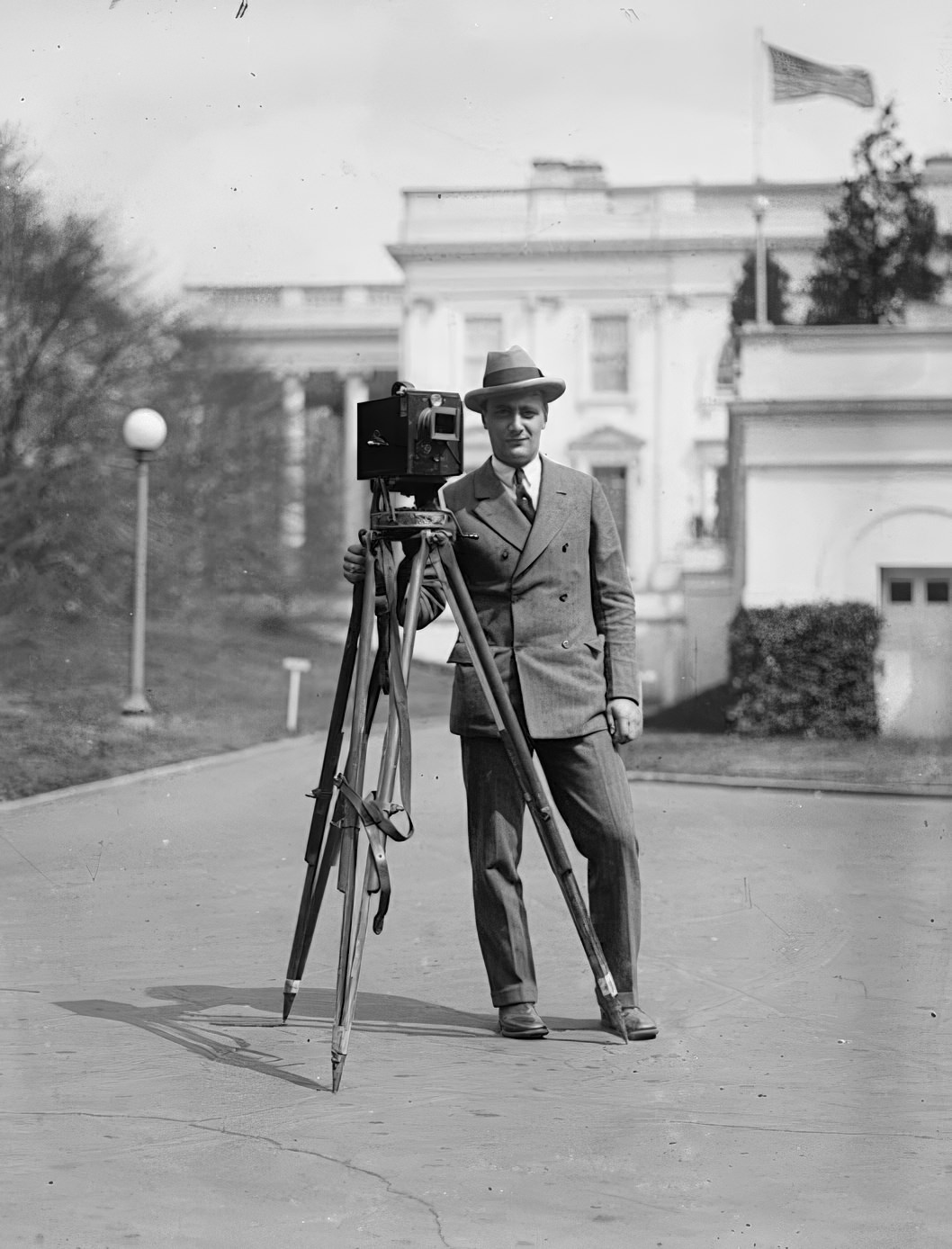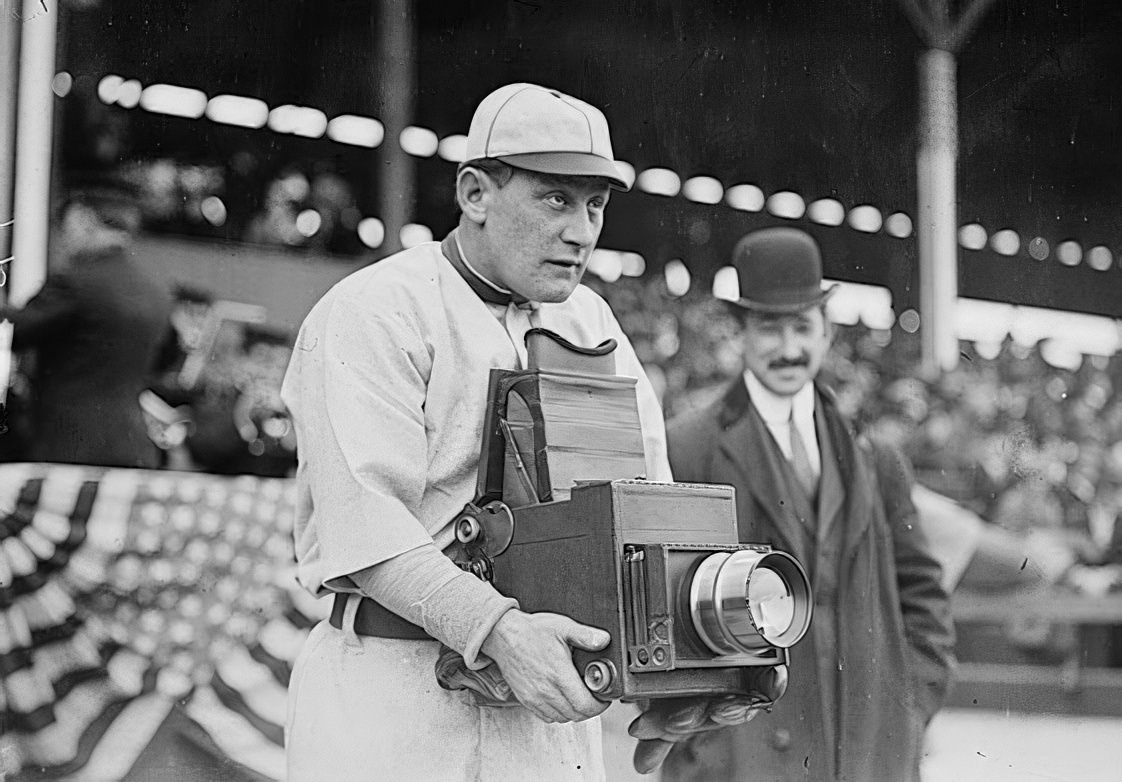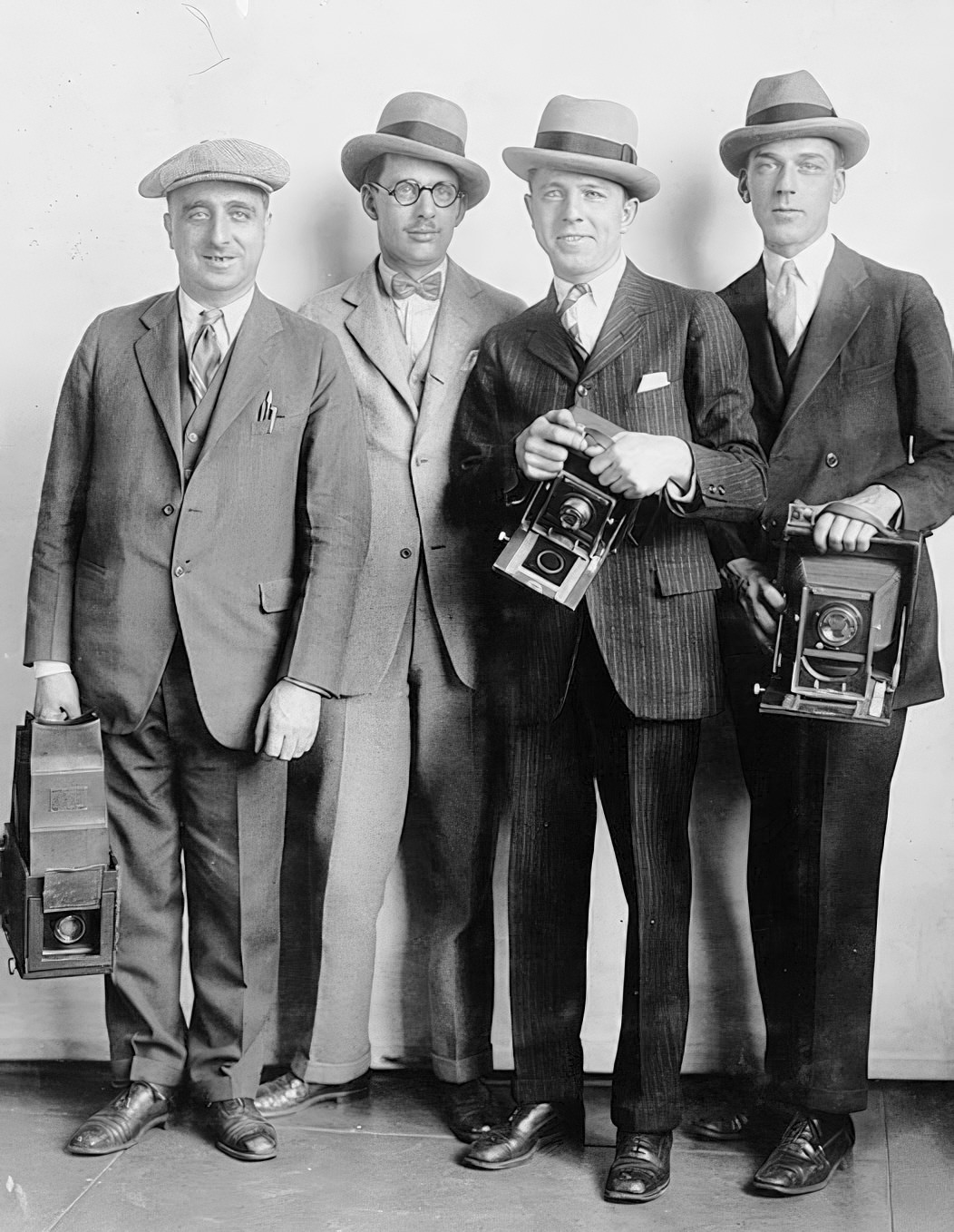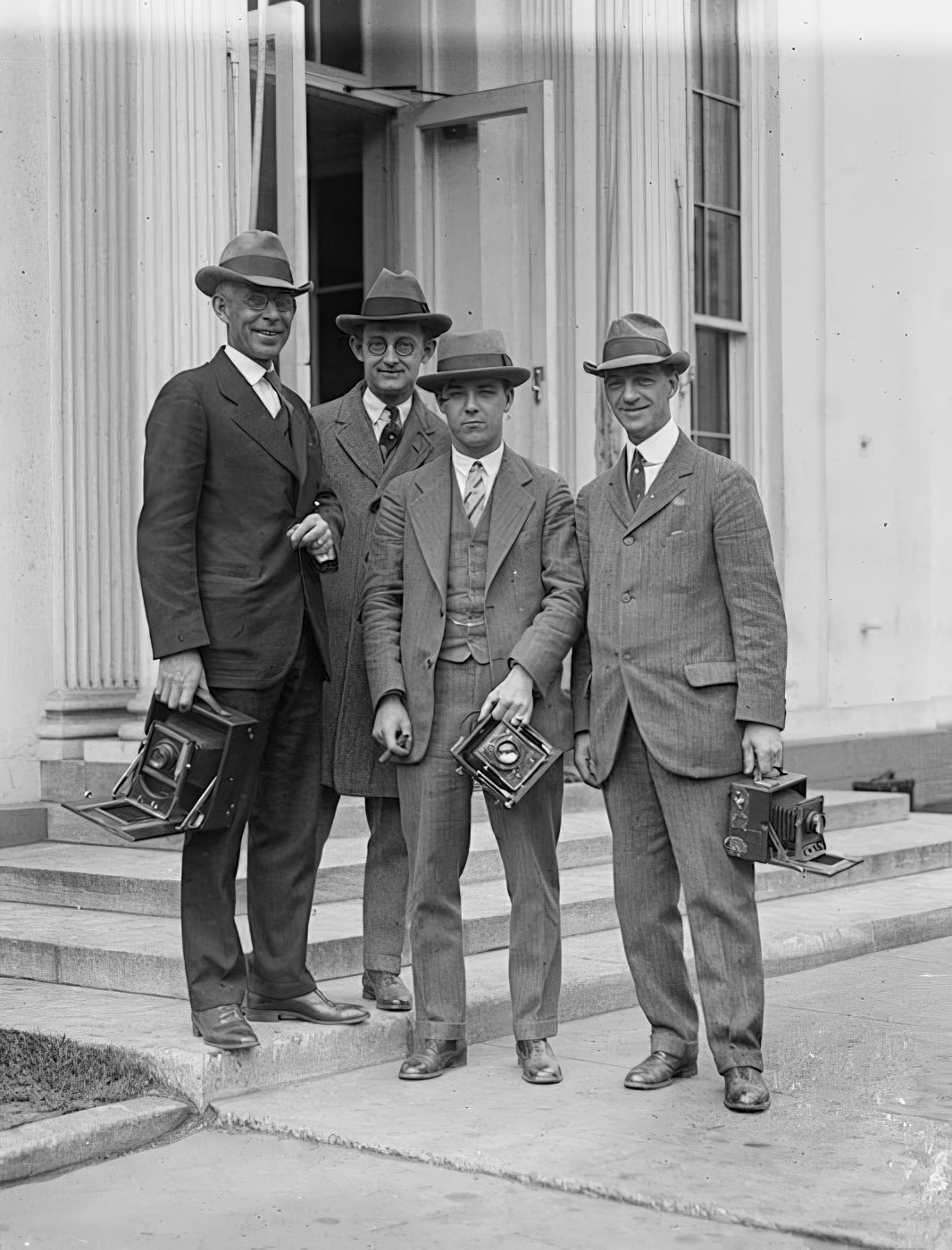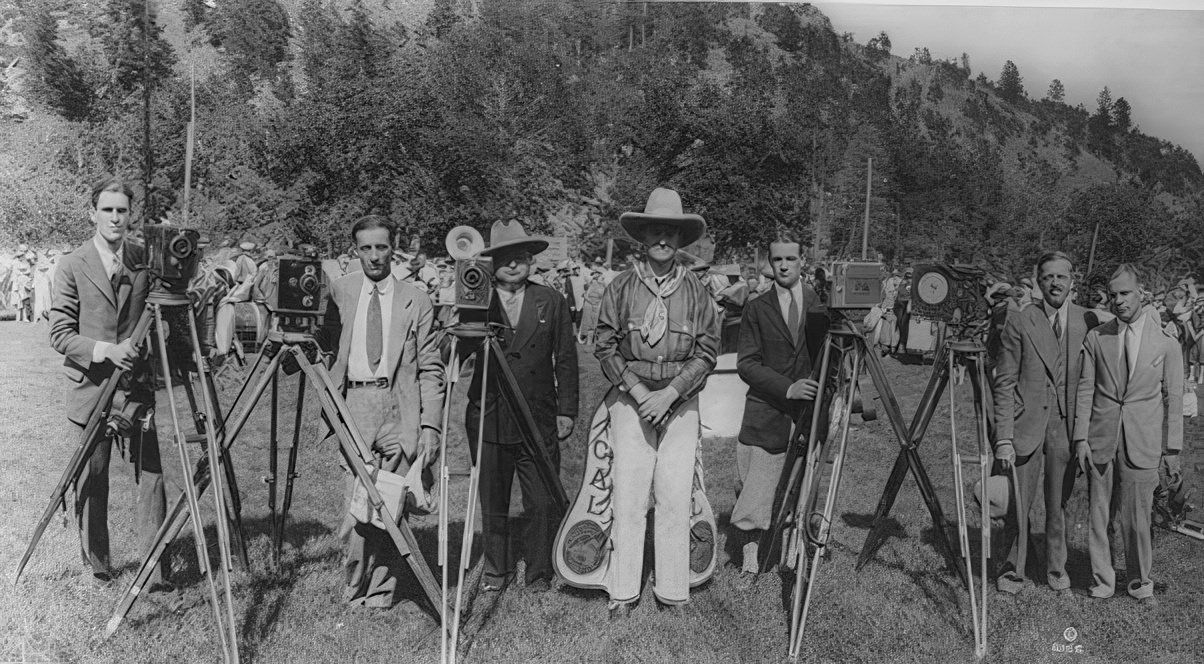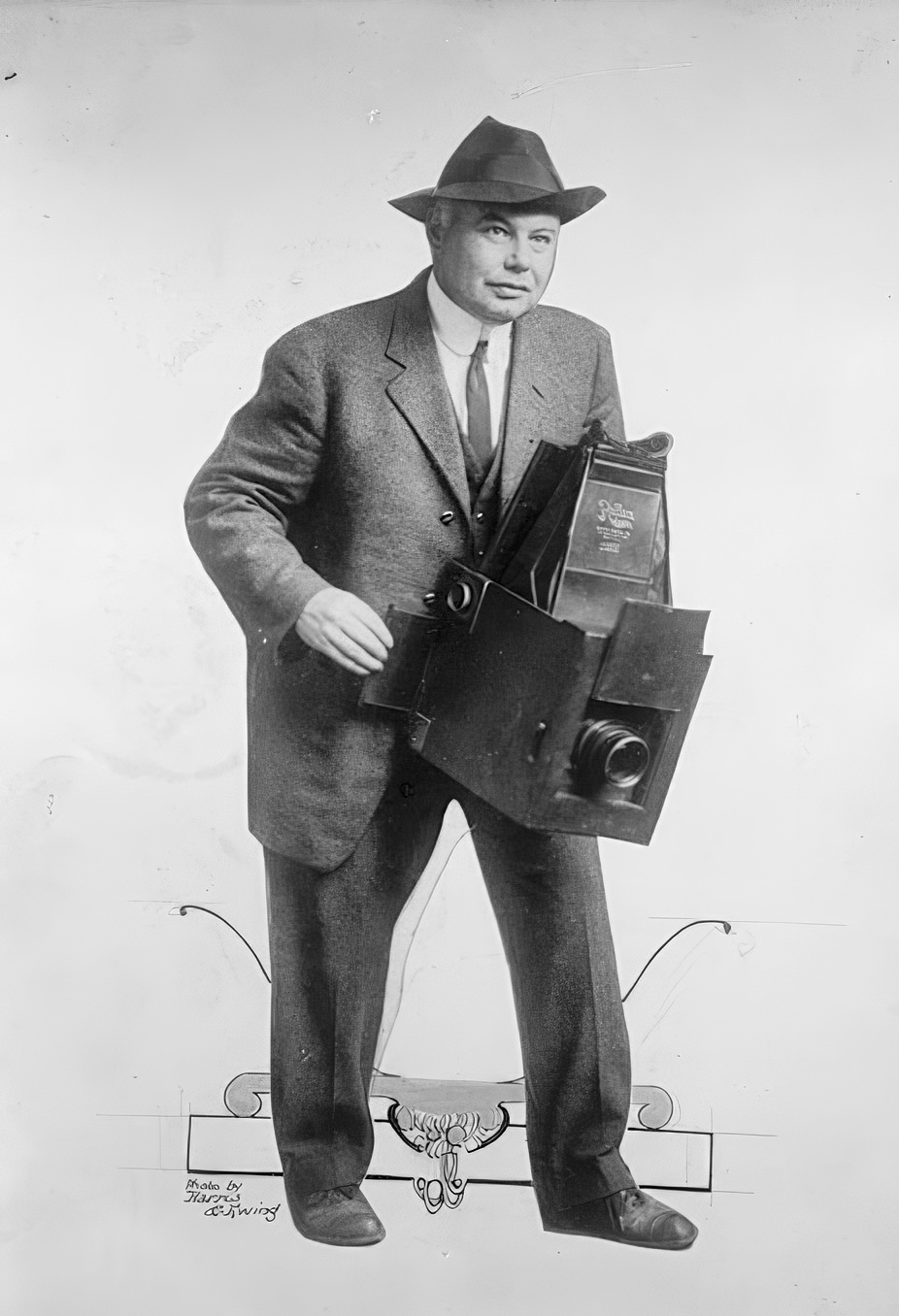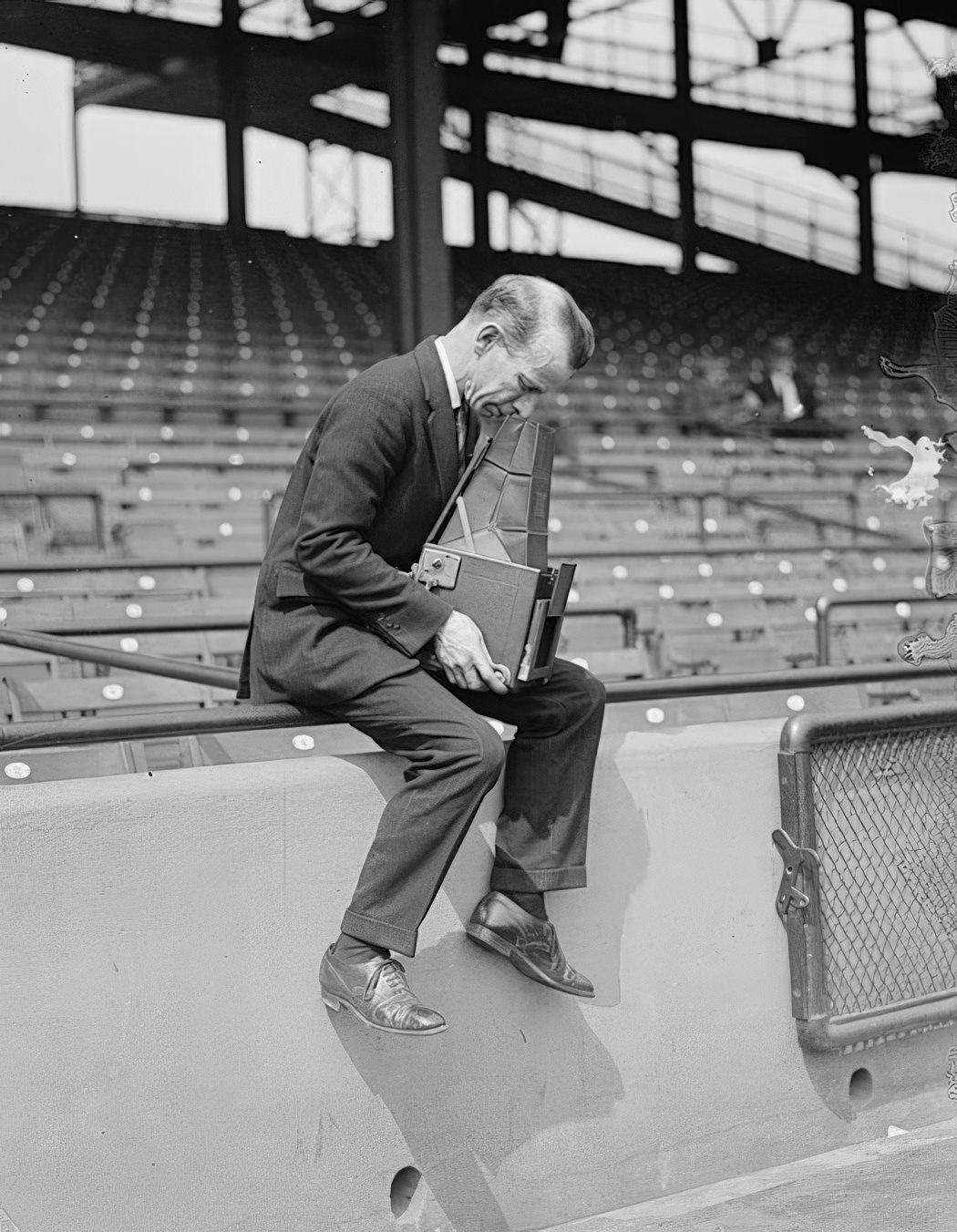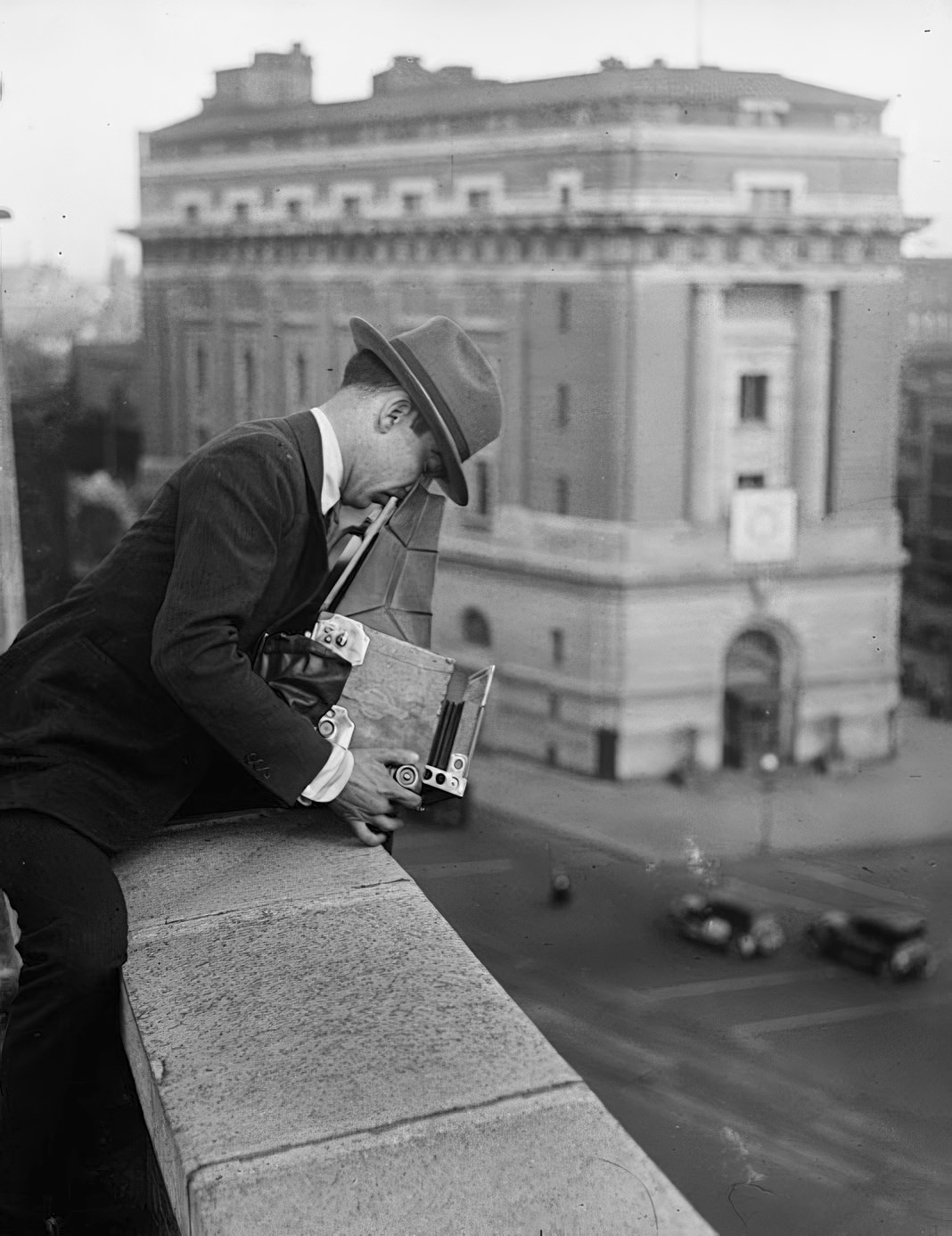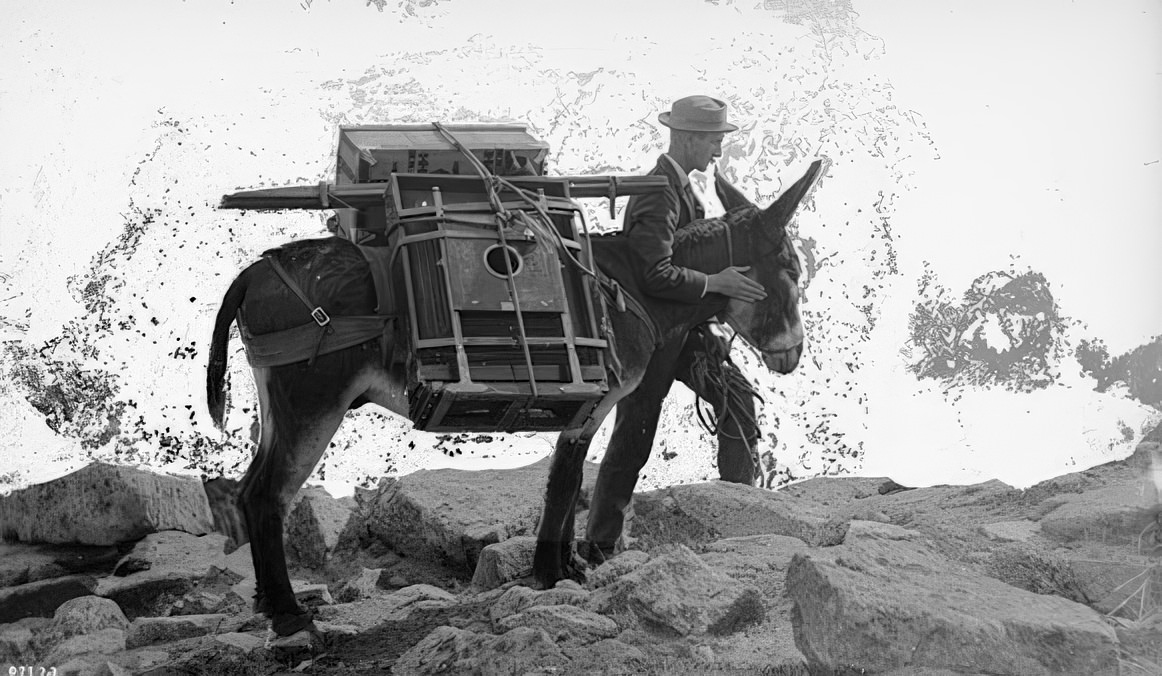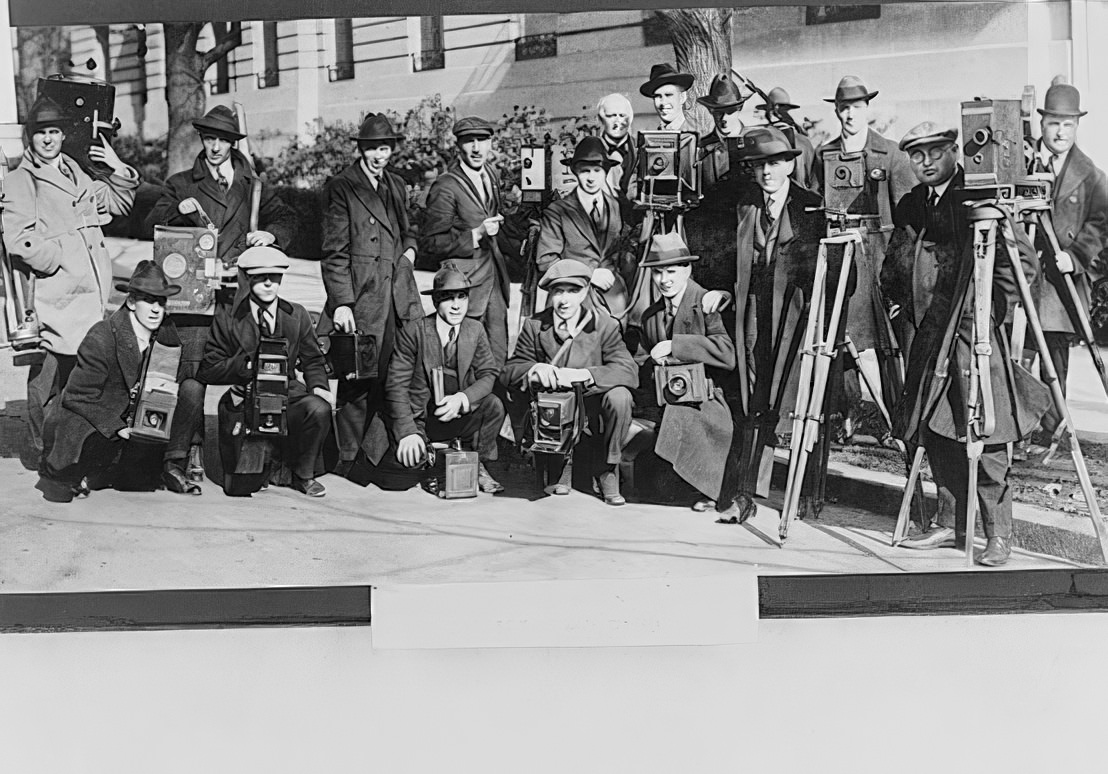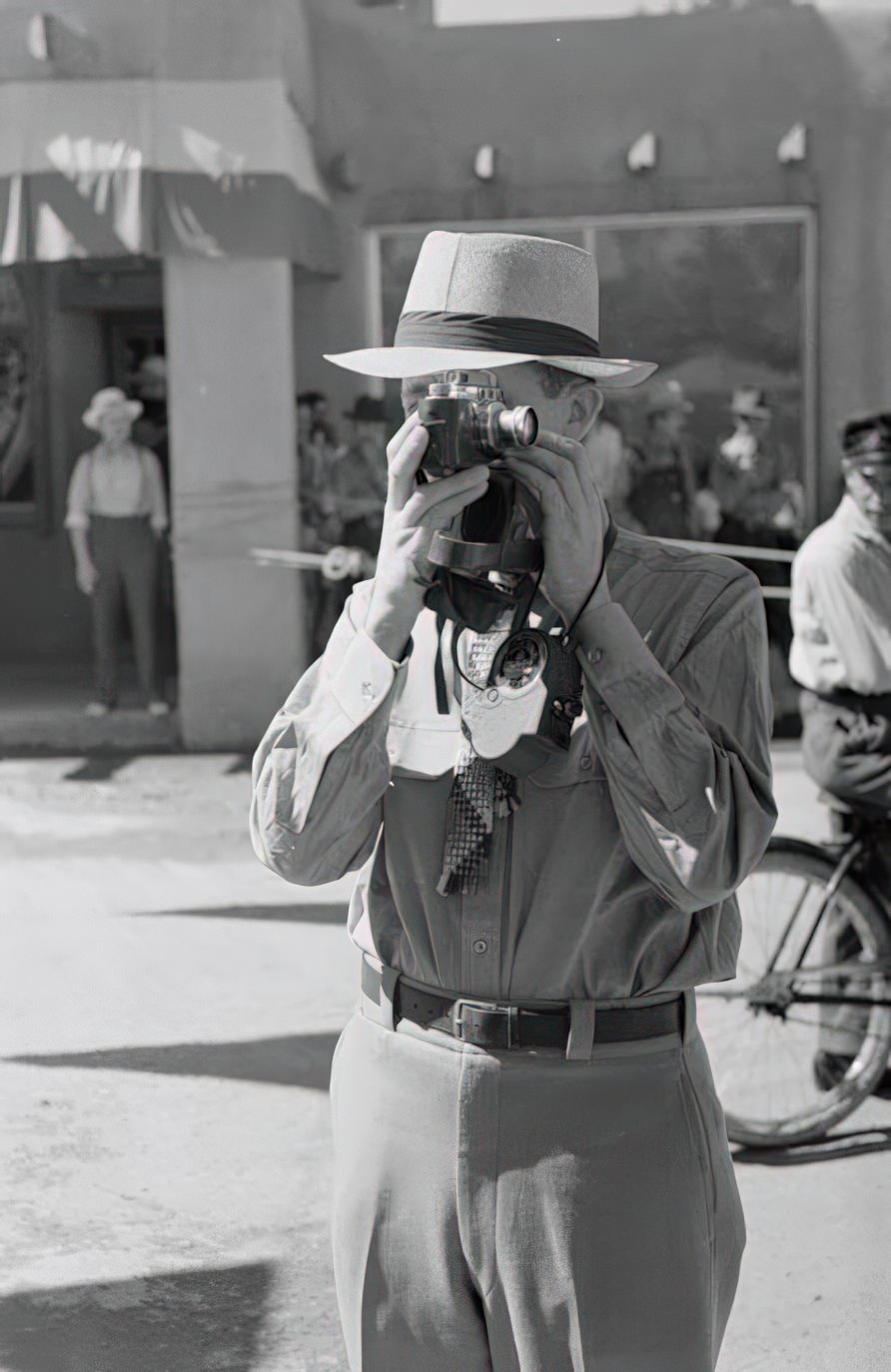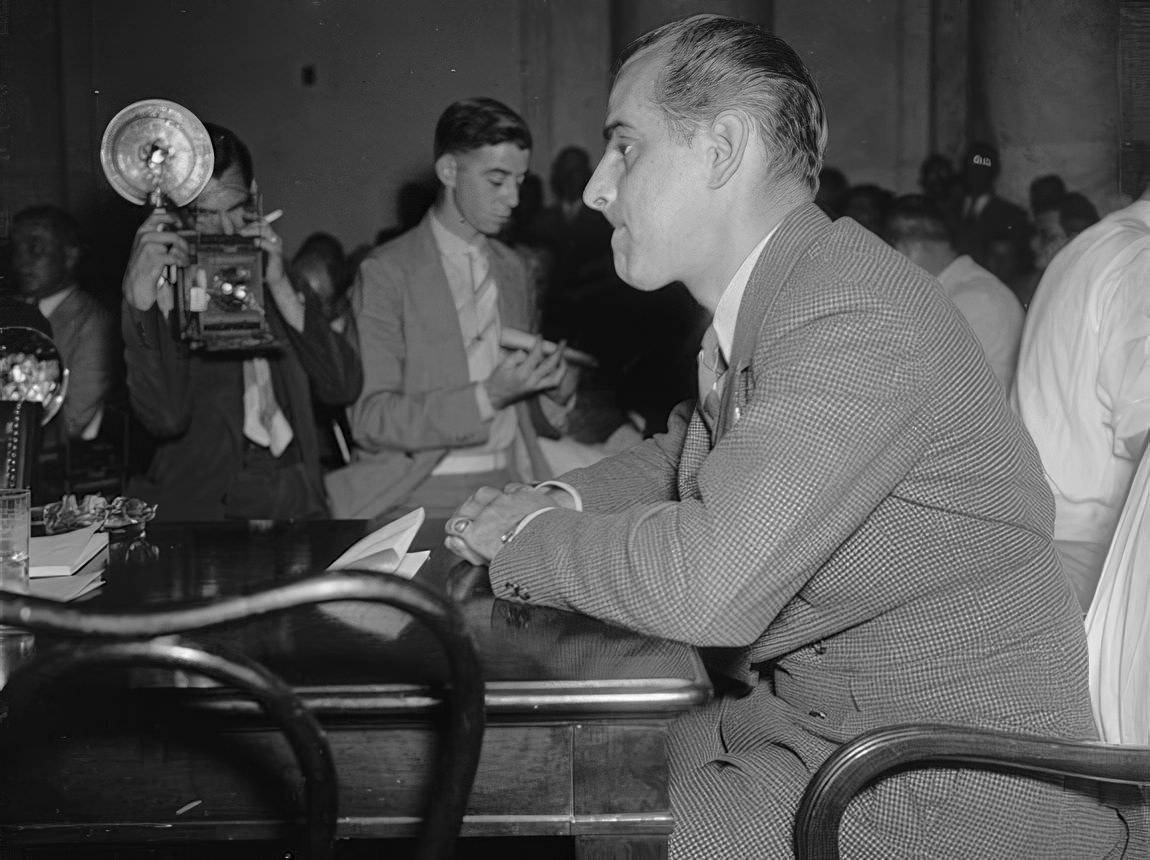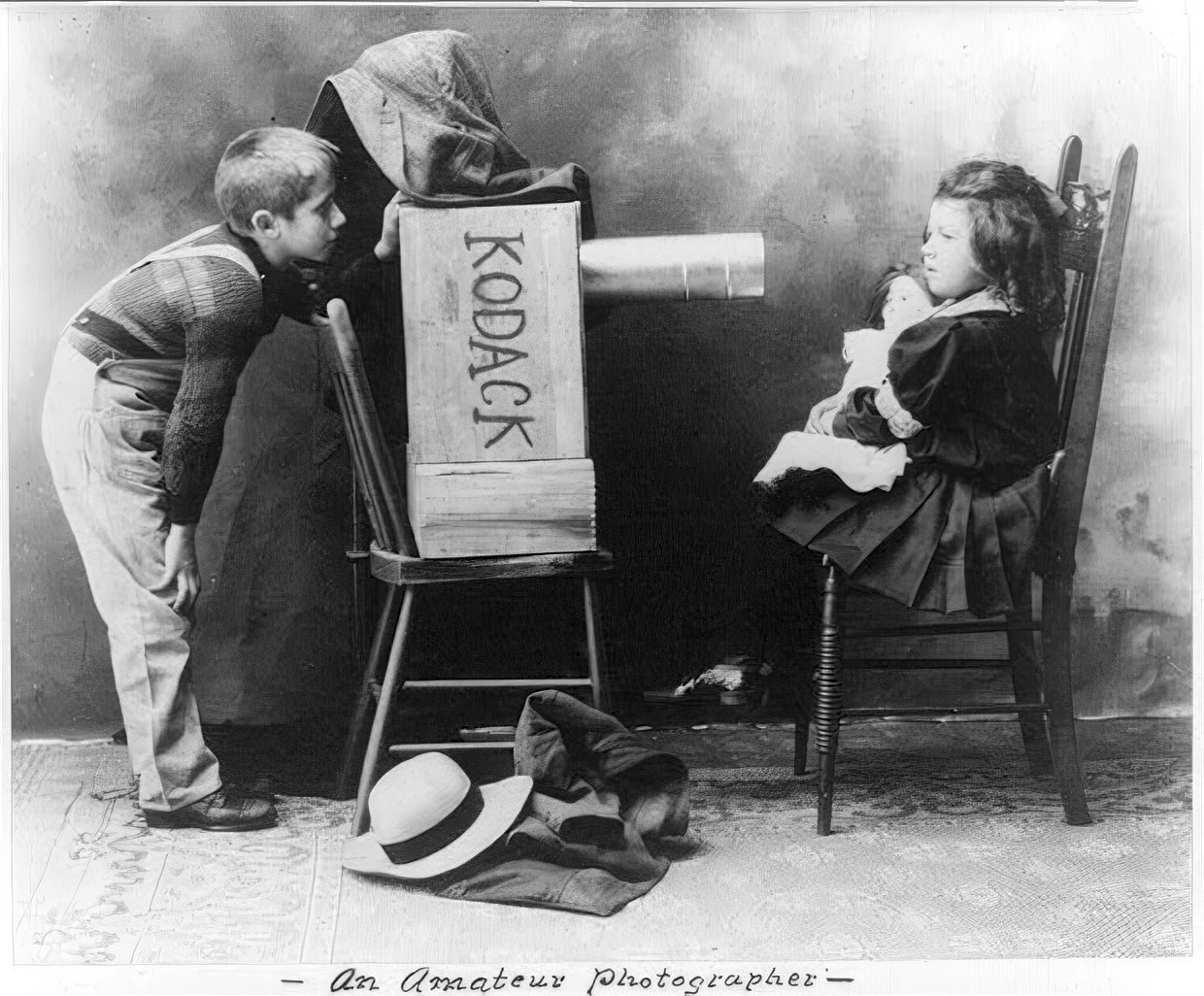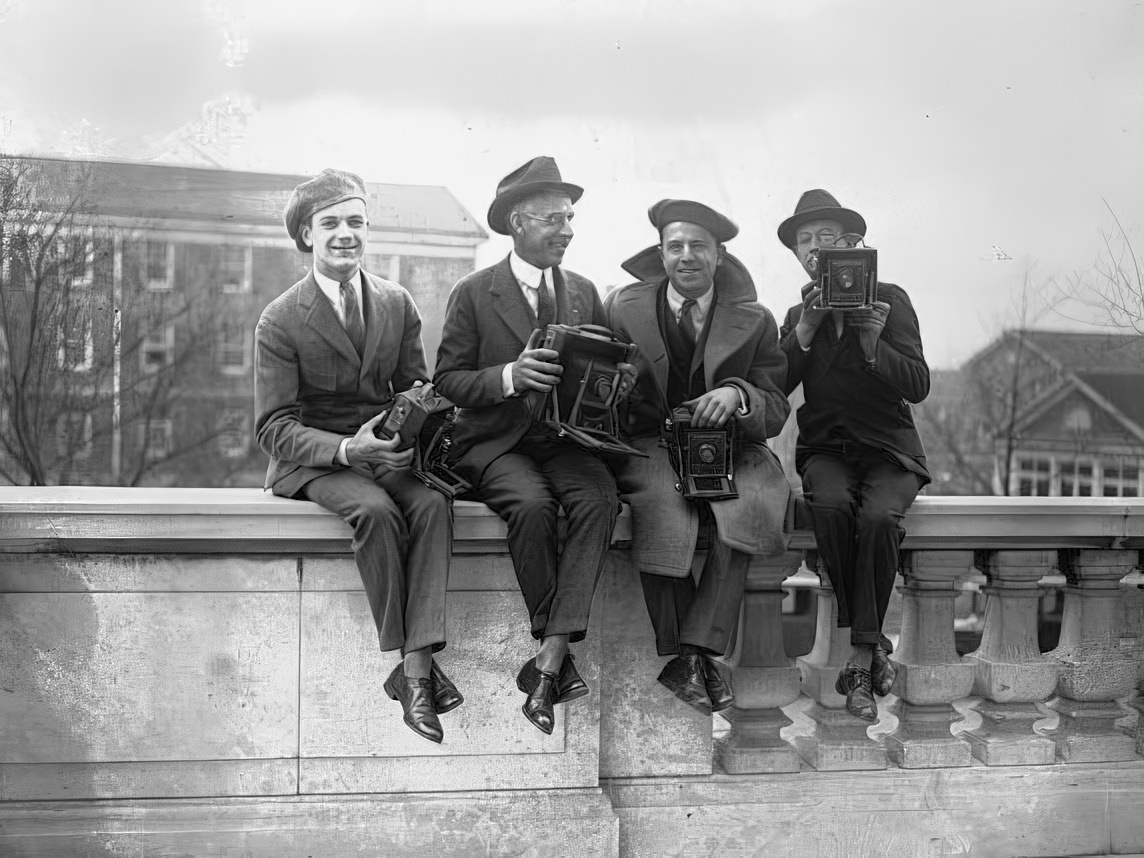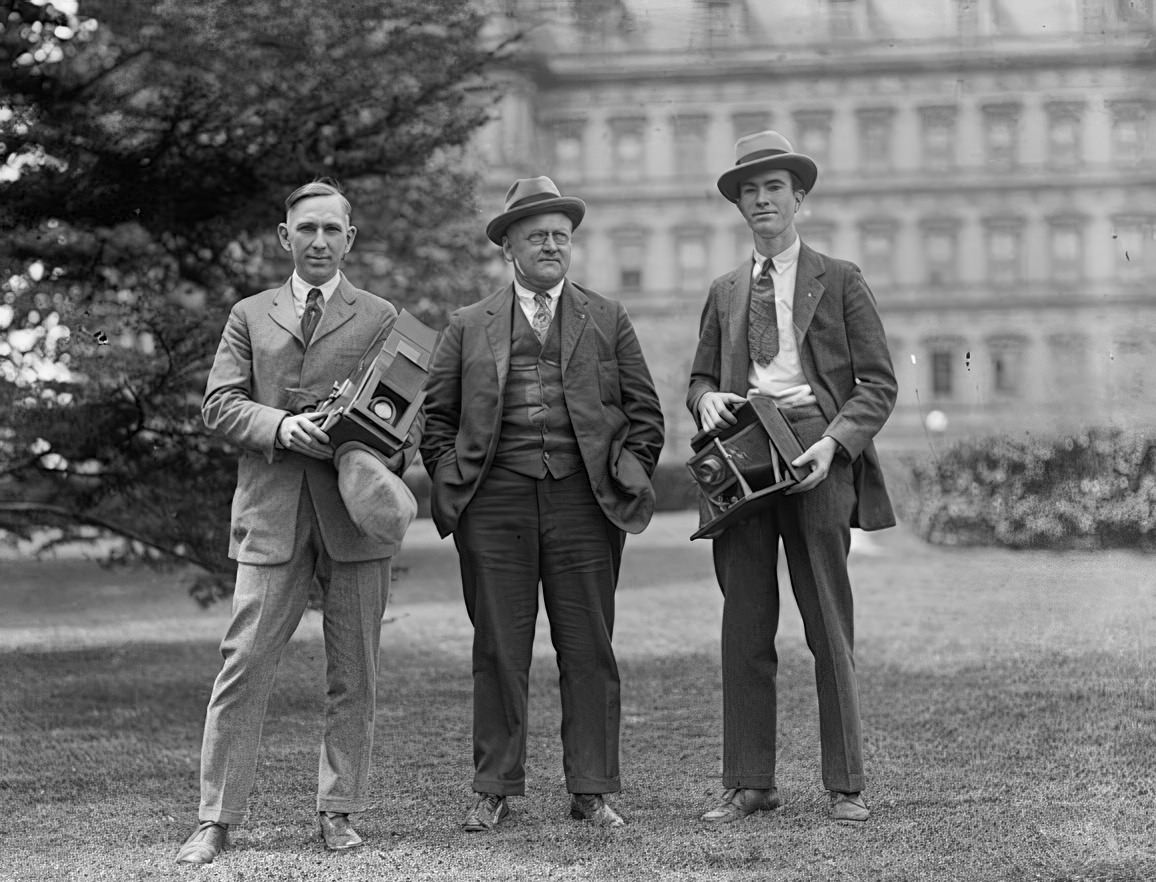Vintage photographs offer fascinating connections to the past, and a particularly engaging type shows people from bygone eras posing proudly with their cameras. As noted in historical observations, there can be something “immediate and wonderful” about seeing these images, which often reveal the pride and perhaps affection individuals felt for the photographic equipment of their time. These pictures feature not only professional photographers but also enthusiastic amateurs and everyday people embracing the technology used to capture memories.
In the late 19th century and the early-to-mid 20th century, cameras evolved significantly, yet they remained noteworthy possessions. Early professional photographers featured in portraits from the late 1800s might pose with large, impressive view cameras made of wood and brass, mounted on sturdy tripods – complex tools requiring considerable skill. As technology progressed into the 20th century, cameras became somewhat more accessible. Photos from this period might show people with folding bellows cameras that were more portable, simple box cameras like the popular Kodak Brownie which brought photography to more amateurs, or eventually, early 35mm cameras and waist-level Twin-Lens Reflex (TLR) models. Regardless of the type, owning a camera often represented an investment, a connection to modern technology, or a valued tool for work or hobby.
Posing with Pride and Purpose
People chose to be photographed with their cameras for various reasons, reflecting the sense of “pride and affection” mentioned in historical commentary. For professional photographers, especially in the late 19th century, posing with their large format camera was a clear statement of their identity and expertise. For amateurs in the 20th century, being pictured with their Kodak or folding camera might signal enthusiasm for a modern hobby, a way to show they were documenting family life or travels. Sometimes, the photo simply aimed to capture the person who was usually behind the camera, turning the lens on the picture-taker for a change. Holding a camera could also indicate the importance of an occasion being recorded, or simply serve as an interesting object to interact with during a portrait session.


